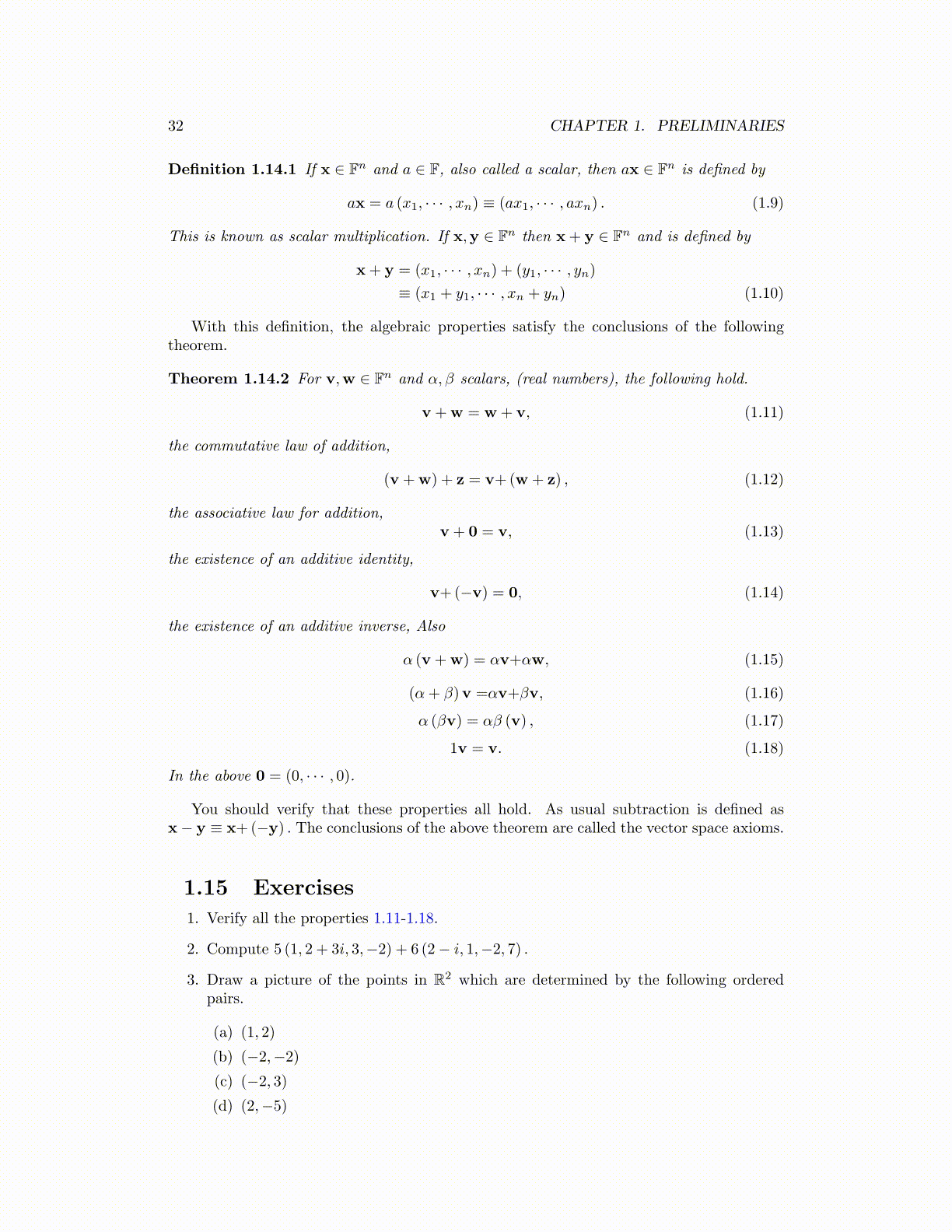
32 CHAPTER 1. PRELIMINARIES
Definition 1.14.1 If x ∈ Fn and a ∈ F, also called a scalar, then ax ∈ Fn is defined by
ax = a (x1, · · · , xn) ≡ (ax1, · · · , axn) . (1.9)
This is known as scalar multiplication. If x,y ∈ Fn then x+ y ∈ Fn and is defined by
x+ y = (x1, · · · , xn) + (y1, · · · , yn)≡ (x1 + y1, · · · , xn + yn) (1.10)
With this definition, the algebraic properties satisfy the conclusions of the followingtheorem.
Theorem 1.14.2 For v,w ∈ Fn and α, β scalars, (real numbers), the following hold.
v +w = w + v, (1.11)
the commutative law of addition,
(v +w) + z = v+(w + z) , (1.12)
the associative law for addition,v + 0 = v, (1.13)
the existence of an additive identity,
v+(−v) = 0, (1.14)
the existence of an additive inverse, Also
α (v +w) = αv+αw, (1.15)
(α+ β)v =αv+βv, (1.16)
α (βv) = αβ (v) , (1.17)
1v = v. (1.18)
In the above 0 = (0, · · · , 0).
You should verify that these properties all hold. As usual subtraction is defined asx− y ≡ x+(−y) . The conclusions of the above theorem are called the vector space axioms.
1.15 Exercises
1. Verify all the properties 1.11-1.18.
2. Compute 5 (1, 2 + 3i, 3,−2) + 6 (2− i, 1,−2, 7) .
3. Draw a picture of the points in R2 which are determined by the following orderedpairs.
(a) (1, 2)
(b) (−2,−2)
(c) (−2, 3)
(d) (2,−5)